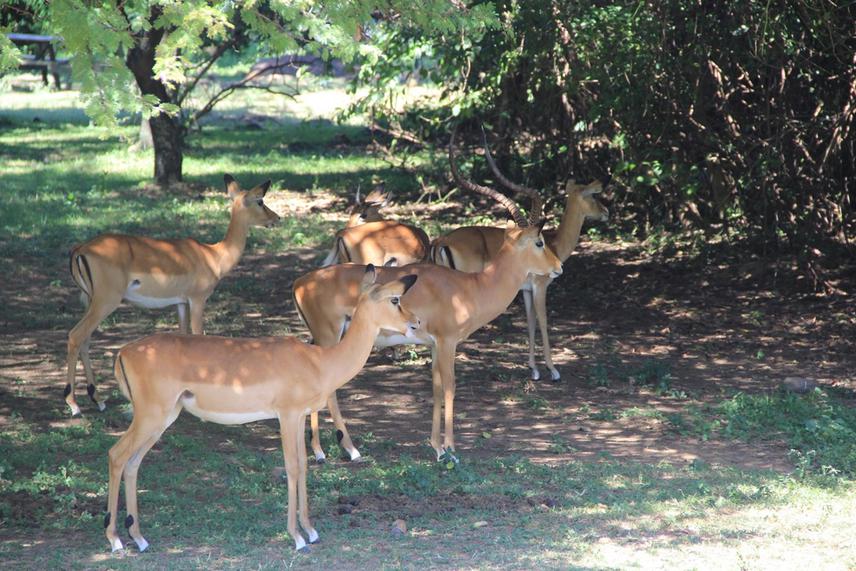Tamie J. Jovanelly
A population of endangered Sitatunga antelope lives in a free-range environment at the Impala Sanctuary in Kisumu, Kenya. Kenya Wildlife Service park officials suspect that increased demands on outdated sewage infrastructure have caused animal drinking water sources to become contaminated. In this pilot study we will establish the current water quality of surface water sources within the park boundaries and train KWS scientists to monitor water conditions for degradation or improvement.

Free-roaming impalas also share similar habitat to the Sitatunga antelope, however, the Sitatunga antelope are way more camera shy and difficult to capture in the wild.
In this pilot study we will establish a baseline data set for water quality within the park boundaries of the Impala Sanctuary. From both surface water and groundwater sources we will measure nine water quality parameters (pH, temperature, fecal coliform, dissolved oxygen, biochemical oxygen demand, nitrates, total phosphates, turbidity, total solids) using field instrumentation. These nine parameters have been chosen because they are essential to identifying water suitable for animal consumption (Mitchell and Williams, 2000; Brown et al., 1970).
Through this thorough evaluation of the park, and adjacent land use, we will be able to delineate if (and likely where) point-source pollution is entering the park. During the initial sampling period the KWS scientists will apprentice, collaborate, and act in supporting roles overseen by the senior scientist (Dr. Jovanelly). The KWS scientists will then have the capacity, and knowledge, to confidently continue the sampling whereby also understanding the results. This is crucial for long-term monitoring within the park to be successful. Through long-term monitoring (12-months) of the nine parameters the KWS scientists will be able to identify improvement or degradation to watershed health based on comparisons of new and old water quality values.
Overall, the aim of this project is to spearhead park stewardship that is supported by scientific substantiation that can be used as a tool to advocate for cleaner water practices, policy, and community education (potentially with support from a Second Rufford Small Grant). More importantly, however, if we determine that the quality of the animal drinking water sources are problematic, the acting park warden can immediately work with animal keepers for solutions to supply clean drinking water.
Moreover, as the expertise of water science is outside the field of study for many KWS scientists, this training will be a valuable investment to the entire organization.